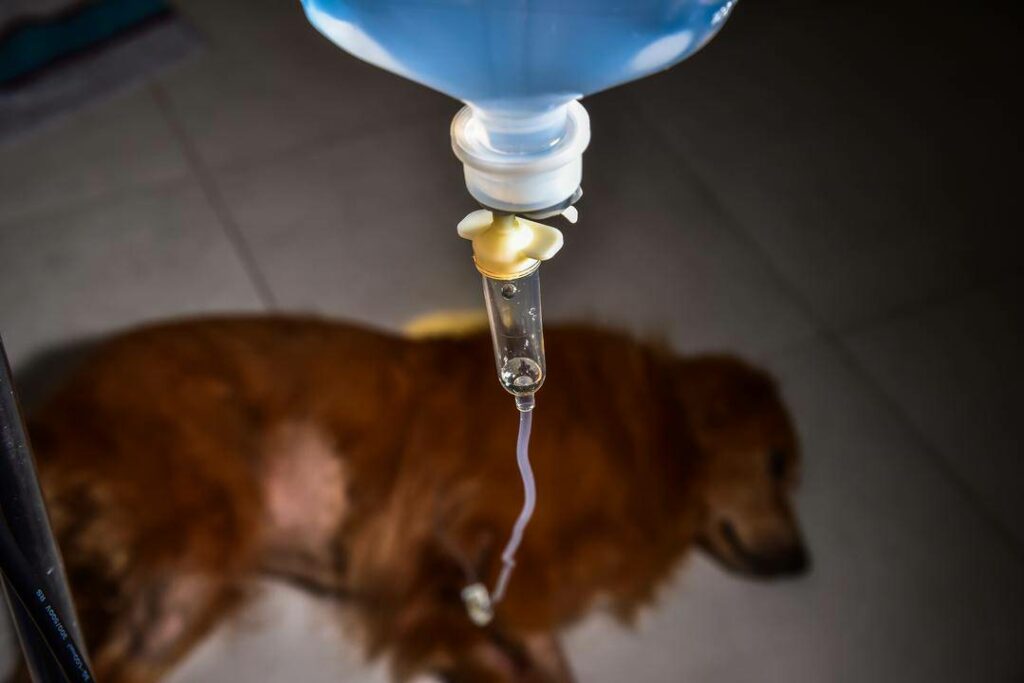What are the most common types of cancer in dogs, and what are the signs? Early detection of cancer in your dog makes all the difference in his or her prognosis. So, here are the biggest warning signs of cancer in dogs.

Cancer is a word that strikes fear in the hearts of dog owners. As human cancer deaths rise in the United States, you may wonder if a similar phenomenon is happening in our canine companions. According to veterinary oncologist Dr. Stacy Binstock, estimates show that 25%-33% of dogs will have cancer at some point in their lives. It is the number one cause of death in older dogs. Those are sobering statistics. The good news is that you can help with early cancer detection and early treatment of your dog.
Warning Signs of Cancer in Dogs
The first step is semi-annual or annual examinations with your veterinarian. These are not just vaccine appointments. A visit is needed for a thorough physical examination. Your veterinarian will check your dog’s weight, vitals, lymph nodes, heart, and lungs, palpate the abdomen, and perform a rectal exam. These are all essential to the early detection of illness. Weight loss may be the first sign and can be easy to miss at home. Secondly, as your dog ages, your veterinarian will likely recommend bloodwork, urinalysis, and other diagnostics. These can detect changes in organ function, possibly indicating cancer.
Types of cancer in dogs are varied and include skin, orthopedic, blood, and bone malignancies. As a result, the symptoms differ wildly and depend on which system is affected. The four most common cancers and their clinical signs are listed below.
Lymphoma
Lymphoma is a frequently diagnosed cancer in dogs. Moreover, it can originate in the lymph nodes, bone marrow, or organs like the spleen. So, the first signs of this disease may be very vague and often include large knots that are palpable under the jaw, behind the elbows, and behind the knees.
These are all locations of lymph nodes that can enlarge with cancer. Other symptoms may include lethargy, weight loss, and increased drinking and urinating.

Osteosarcoma
This is a type of bone cancer seen often in large breeds such as Great Danes and Wolfhounds, although it can occur in any breed. Osteosarcoma typically grows silently at the end of a bone (called the diaphysis) until the bone is severely weakened. Early symptoms may include swelling and tenderness. Often, there are no symptoms until the tumor destroys the bone enough to cause a fracture. When this happens, your dog may suddenly be unable to walk on the affected leg and demonstrate signs of severe pain.
Hemangiosarcoma
Another type of cancer that often has no obvious clinical signs is hemangiosarcoma. These tumors can grow anywhere—on the skin or in the spleen, liver, or other internal organs. In dogs, it is most frequently encountered in the spleen, liver, or heart. Usually, no signs are noted until the tumor grows very large and ruptures. This sudden, catastrophic rupture leads to internal bleeding, weakness, and collapse.
Mast cell tumor
Boxers are especially prone to these skin malignancies. Mast cells are normally found in the skin and react when an allergen is introduced. Moreover, they are filled with histamine and other substances that are released in an allergic reaction, leading to the formation of hives. Unfortunately, cancer can arise from these cells. The hallmark of an MCT is a growth on the skin that waxes and wanes in size and character. They can be small and “quiet,” or they can become large, inflamed, and weep fluid.
Always observe your dog carefully for any changes. Any skin masses or lumps that you palpate should be checked out by your veterinarian sooner rather than later! Remember, early detection is critical in catching and treating cancer.
Source: whole-dog-journal




